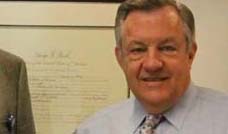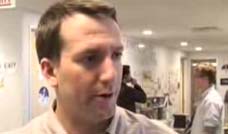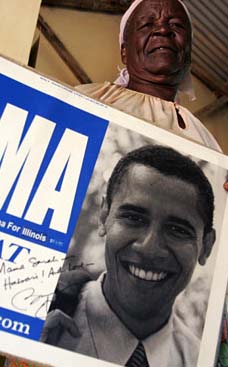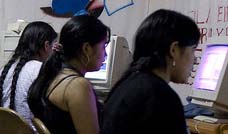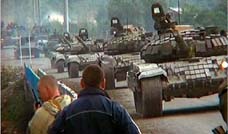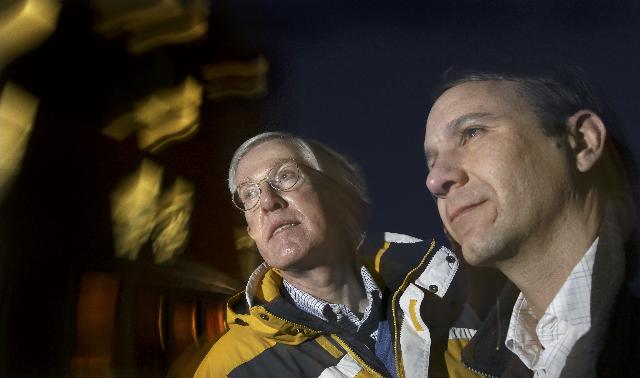
It's not the ache in their joints that tells Mark Engebretson and David Murr the weather's about to change. It's sunspots. The two Augsburg College physicists say a revival of sunspots after an unusually long lull is a signal that it could get stormy above Earth. Stormy enough to mess with electrical grids here below and with GPS systems and other technology that didn't even exist the last time there was a significant solar outburst. "It's not too soon to have our technological infrastructure be prepared," said Engebretson, who has been teaching at Augsburg for 32 years. From their unlikely base in the Augsburg Science Building in Minneapolis, they monitor what they call space weather -- the flow of radiation and charged particles from the sun to Earth. A widescreen computer is the dominant feature in Engebretson's cubby-like office. There, he and Murr can examine the very face of the sun, as well as simulations of the distortions in Earth's magnetic field that can be caused by geomagnetic storms.
Tanzania RPCV David Murr wonders if a sunstorm may be blowing in
Is a sunstorm blowing in?
By BILL McAULIFFE, Star Tribune
December 8, 2008
Caption: Augsburg College physicists Mark Engebretson, left, and David Murr are studying sunspot activity. They say a big burst of protons, electrons and magnetism from the sun could cause major disruptions in airline communications, GPS technology and electrical power grids. Photo: Bruce Bisping, Dml - Star Tribune
It's not the ache in their joints that tells Mark Engebretson and David Murr the weather's about to change. It's sunspots. The two Augsburg College physicists say a revival of sunspots after an unusually long lull is a signal that it could get stormy above Earth. Stormy enough to mess with electrical grids here below and with GPS systems and other technology that didn't even exist the last time there was a significant solar outburst.
"It's not too soon to have our technological infrastructure be prepared," said Engebretson, who has been teaching at Augsburg for 32 years.
From their unlikely base in the Augsburg Science Building in Minneapolis, they monitor what they call space weather -- the flow of radiation and charged particles from the sun to Earth.
A widescreen computer is the dominant feature in Engebretson's cubby-like office. There, he and Murr can examine the very face of the sun, as well as simulations of the distortions in Earth's magnetic field that can be caused by geomagnetic storms.
They can digest voluminous data from 20 devices they, students and colleagues from other universities have placed around the
near-polar regions of the globe, from Cambridge, Minn., to Scandinavia and Antarctica. The shoebox-size ground magnetometers measure changes in the Earth's magnetic field. "They're one of the oldest ways to study space, and also one of the cheapest," Engebretson said. Pulses from the sun bring us one of the great spectacles of life in the North: the aurora borealis. But they also bring trouble.
Engebretson and Murr say a significant "coronal mass ejection" -- a burst of electrons, protons and magnetism from the sun -- could take down electrical power grids and disrupt airline radio communications and routes over the poles.
Also at risk is the satellite-based global positioning system, a technology that has blossomed since the last significant solar peak and is now directing pilots, oil drillers, farmers in the field and, of course, campers in the Boundary Waters Canoe Area Wilderness.
Getting ready
Some geomagnetic storms have been more memorable than others. An 1859 event knocked out the entire U.S. telegraph system. A 1989 storm provided a delightful display of Northern Lights as far south as Cuba but also shorted out the entire Canadian province of Quebec, throwing 6 million people into the dark in only 90 seconds.
The last sunspot peak was 2002, though an isolated flare in 2003 was the fourth most powerful ever recorded, by some measures.
"Generally it's hard to get people to remember the last one," Murr said.
This year is near the time of "solar minimum," the period of least sunspot activity in the 11 years between sunspot peaks.
But recent increases in the number of sunspots which accompany solar flares have space physicists getting ready for surges of flares and coronal mass ejections in about three years.
"Soon we'll start to ramp up and rise to the maximum," noted Terry Onsager, a physicist with the National Space Weather Prediction Center in Boulder, Colo. "We're excited for it to start happening."
John Kappenman, a Duluth-based consultant on geomagnetic storms for utilities and government, is already taking precautions. He said he has stocked up on canned goods, water and batteries. A geomagnetic storm several times as powerful as 1989's is a distinct possibility over the next 30 years, Kappenman said. That could knock out 50 to 70 percent of the U.S. power system, requiring repairs that could take years and threatening basic food and water supplies.
Engebretson and Murr aren't quite ready to predict what the recent increase in sunspot activity will bring.
"They're coming back, and they're in the right places," is all Engebretson would say.
An exceptional team
Engebretson, who also holds a master of divinity degree, got his Ph.D. at the University of Minnesota and for 15 years maintained an office at both the university and Augsburg. His and Murr's work in space weather is unusual for a school such as Augsburg, said Keith Goetz, who manages a University of Minnesota program that's been taking pictures of the sun from a satellite orbiting around the star.
"At a small liberal arts school, that kind of focus is usually either nonexistent or much less than [at Augsburg]," Goetz said. "They're exceptional for this."
Both Engebretson and Murr, who have published dozens of scientific papers, combine their research with teaching. Murr, in fact, first started working with Engebretson when he was a high school student from Prior Lake. He then went to Augsburg, earned a Ph.D. from Boston University and studied further at Dartmouth College.
Murr, who also taught math and science in the Peace Corps in Tanzania, spent last year on a leave working with the State Department in Africa promoting space science -- and the need for more ground instruments.
But the teaching impulse drives him, he said, even if it's to remind people of what space weather can do to Earth's electronic picnic.
"One of the things we have to do as educators is talk about risks," he said.
Bill McAuliffe • 612-673-7646








